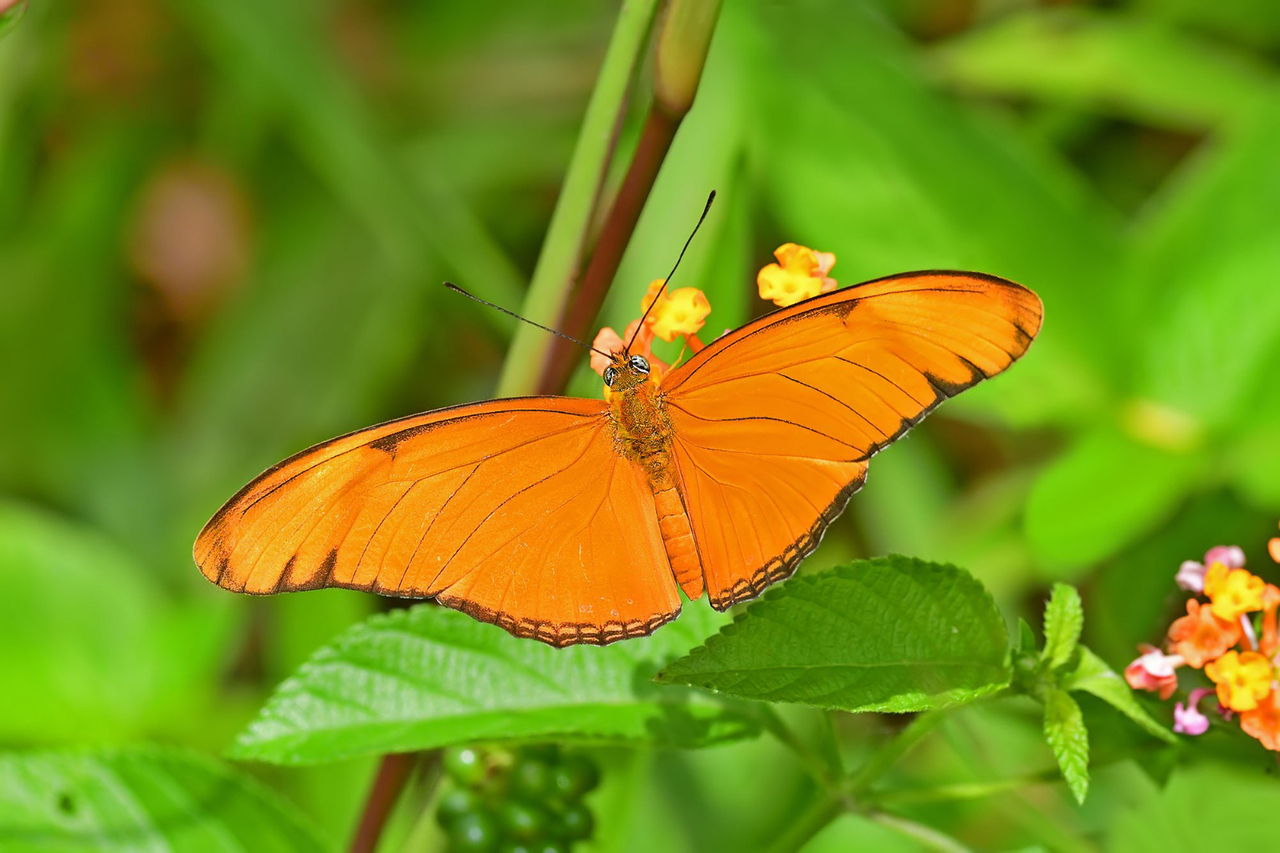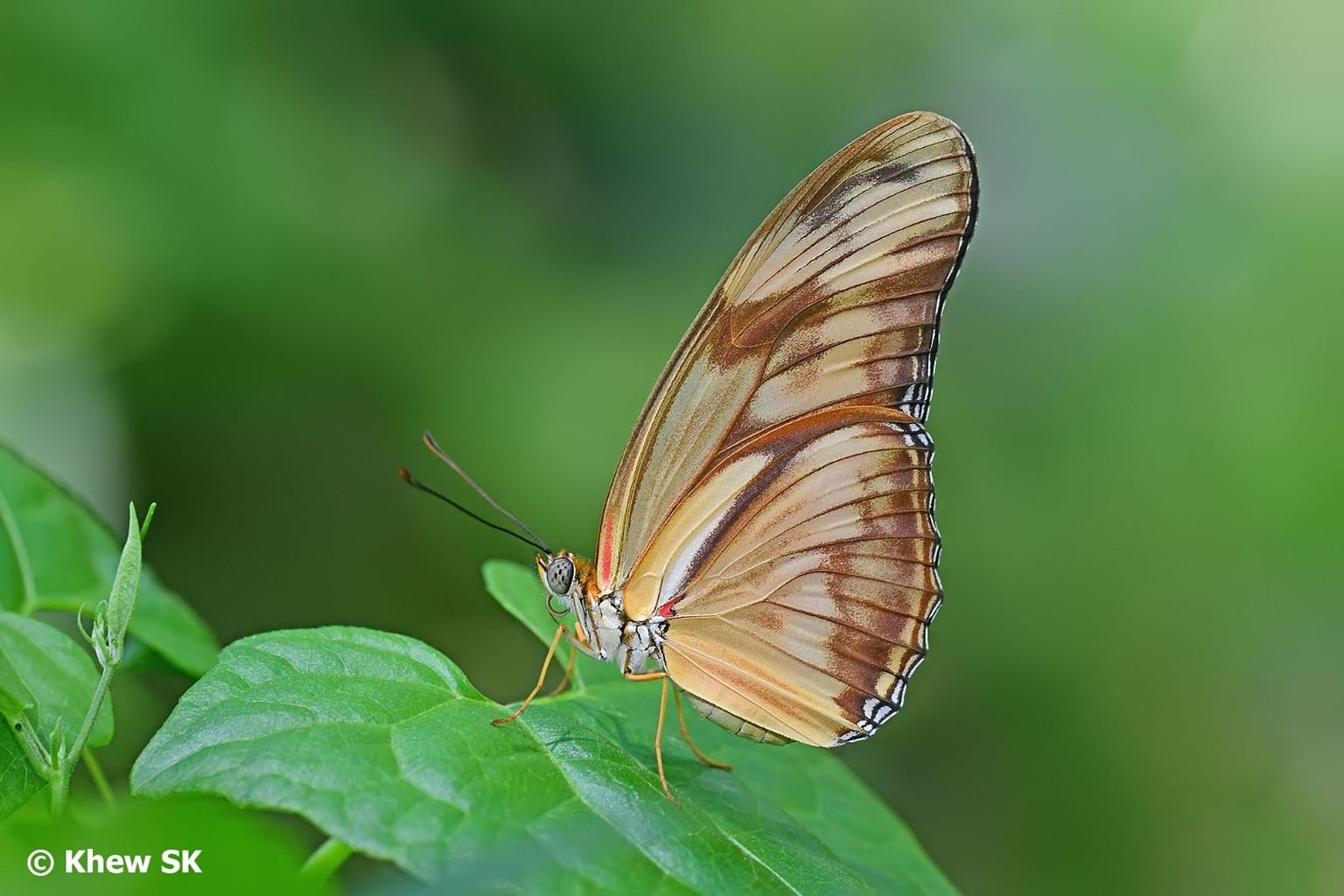South American butterfly, the julia heliconian, makes Singapore home
Sign up now: Get ST's newsletters delivered to your inbox

The strikingly orange julia heliconian butterfly is also known by its scientific name Dryas iulia.
PHOTO: KHEW SIN KHOON
Follow topic:
SINGAPORE - A butterfly species that originally hails from South America has settled in Singapore, following a territorial expansion down the South-east Asian archipelago that took more than a decade.
The strikingly orange julia heliconian butterfly - also known by its scientific name Dryas iulia - was first spotted in the wild in Thailand in 2007, after having escaped from butterfly farms in Phuket.
The first sighting of the butterfly in Singapore was at HortPark in June 2021. In less than a year, it has established colonies across Singapore, including on Pulau Ubin.
Dr Anuj Jain, an ecologist at bioSEA, a firm that consults on ecological design, said it is likely that the butterflies proliferated as they found a familiar food source - a South American passion fruit, or Passiflora foetida.
They are growing in abundance in South-east Asia after the plants were introduced for food, medicinal and ornamental reasons in countries such as Thailand, Malaysia and Singapore.
Dr Jain, a former chairman of the butterfly and insect group at Nature Society (Singapore), said: "It must have taken many generations for the butterflies to eventually expand to Malaysia and Singapore."
Members of a Singapore butterfly interest group, Butterfly Circle, spotted the butterflies during an outing to Pulau Langkawi in 2009, the year the butterfly was recorded in Malaysia as a newly settled species.
Of the sighting, Mr Khew Sin Khoon, the head of Butterfly Circle, said: "It was a curiosity, as this species is of South American origin and native to countries like Mexico, Colombia and Brazil."
Researchers then had also performed DNA sequencing and traced the julia heliconian butterflies to stock from Costa Rica exported to the butterfly farms in Phuket, confirming Mr Khew's hunch that the butterflies had escaped from the farms.
In 2015, the orange butterflies were spotted farther south in Selangor by Butterfly Circle members.
When this sighting was recorded, Mr Khew, who is also the president and group chief executive of CPG Corp, an Asian architectural consultancy firm, said: "I predicted that it would be a matter of time before the julia heliconian will arrive in Singapore."
He said this was because two other exotic species of butterflies had made their way down to Singapore in the same way.
The leopard lacewing has been recorded in Singapore since 2005 and the tawny coster since 2006.
On these two butterflies, Dr Jain said they were likely to have expanded to Malaysia and Singapore eating their way through the peninsula on the South American passiflora plants as well.
The National Parks Board (NParks) said in response to queries from The Straits Times that more data on the julia heliconian butterfly will be collected to understand their impact on local ecosystems.
Mr Ryan Lee, group director of NParks' National Biodiversity Centre, said NParks takes efforts to safeguard Singapore's native biodiversity through measures such as removing invasive species when they compete for food with native species, or only selectively planting native trees and shrubs to provide more food for native fauna.
He added: "Maintaining high species richness and diversity in our native ecosystems can create a natural resistance to invasion."

Mr Khew said no Singapore species is known to feed on the host plants that the three alien species of butterflies rely on as a food source. He added that this means their migration is unlikely to have a negative impact on the local environment.
"All three species are now considered common in Singapore and are frequently recorded by photographers and nature enthusiasts over a wide distribution across the island," he said.
Over the years, some non-native fauna have been localised in Singapore.
Several African grassland birds, such as the golden-backed weaver, have become established in Singapore.
Also, the julia heliconian butterfly is just one of more than 30 species of exotic butterflies that have been spotted in Singapore. There are more than 320 species of butterflies in Singapore.
Mr Khew said: "Like birds, butterflies do not respect geographical nor political borders."
As long as conditions are favourable for the colonisation of habitats, these exotic species will continue to spread across regions and exist in Singapore, he added.

